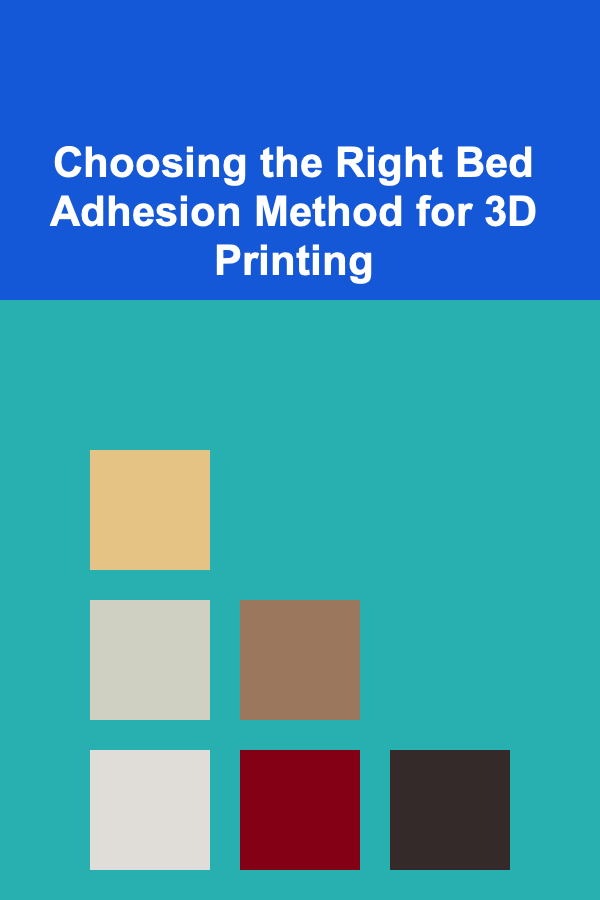
Choosing the Right Bed Adhesion Method for 3D Printing
ebook include PDF & Audio bundle (Micro Guide)
$12.99$5.99
Limited Time Offer! Order within the next:

Achieving perfect bed adhesion is a cornerstone of successful 3D printing. Without a strong bond between the first layer and the build plate, prints are prone to warping, detaching, and ultimately failing. This article delves deep into the various bed adhesion methods available, exploring their strengths, weaknesses, and suitability for different filaments and printing scenarios. Understanding these nuances will empower you to choose the optimal solution for your specific needs and significantly improve your print success rate.
Understanding Bed Adhesion Challenges
Before diving into specific methods, it's crucial to understand the underlying challenges that contribute to poor bed adhesion. Several factors can negatively impact the first layer's ability to stick to the build plate, including:
- Material Shrinkage: As the extruded plastic cools, it contracts. This shrinkage can create stress and pull the corners of the print away from the bed, leading to warping and detachment. Different materials exhibit varying degrees of shrinkage; ABS, for example, is notorious for its high shrinkage rate compared to PLA.
- Temperature Differences: A significant temperature difference between the hot plastic being extruded and the cooler build plate can exacerbate shrinkage. This difference creates internal stresses that fight against adhesion.
- Insufficient Bed Temperature: The bed temperature plays a crucial role in keeping the first layer pliable and promoting bonding. If the bed is not heated sufficiently, the plastic will cool too quickly, hindering adhesion.
- Uneven Bed Leveling: An unlevel bed creates inconsistencies in the first layer thickness. If the nozzle is too far from the bed, the plastic won't adhere properly. If it's too close, it can restrict extrusion and cause other issues.
- Contaminated Build Plate: Dust, oil, fingerprints, and other contaminants on the build plate can create a barrier between the plastic and the surface, preventing proper adhesion.
- Inadequate First Layer Settings: Printing the first layer too quickly or with insufficient extrusion can result in a weak foundation.
Bed Adhesion Methods: A Comprehensive Overview
Now that we've identified the common challenges, let's explore the various methods available to improve bed adhesion:
1. Bare Glass Bed
A simple, often underestimated, solution is printing directly onto a clean glass bed. While it might seem rudimentary, a clean and leveled glass bed can provide excellent adhesion for certain materials, particularly PLA.
Pros:
- Smooth Surface Finish: The first layer will have a smooth, glossy finish, mirroring the surface of the glass.
- Cost-Effective: Glass is a relatively inexpensive material, making it a budget-friendly option.
- Easy to Clean: Glass is easy to clean with isopropyl alcohol or other suitable cleaning solutions.
Cons:
- Limited Material Compatibility: Bare glass struggles with materials like ABS, PETG, and TPU without additional adhesion aids.
- Prone to Warping (with certain materials): Without assistance, materials with high shrinkage rates can warp on a glass bed.
- Can be Difficult to Remove Prints: Prints can sometimes adhere too strongly to the glass, making removal challenging and potentially damaging the print or the bed.
Best For:
- PLA printing
- Small, simple prints
- Users on a tight budget
2. Heated Bed
A heated bed is virtually essential for printing with anything beyond PLA. It helps to maintain a consistent temperature in the first layer, preventing warping and improving adhesion.
Pros:
- Improved Adhesion for Most Materials: A heated bed significantly enhances adhesion for a wider range of filaments, including ABS, PETG, and TPU.
- Reduced Warping: By maintaining a higher temperature, the heated bed minimizes temperature differentials and reduces warping.
- Standard Feature: Most modern 3D printers come equipped with a heated bed.
Cons:
- Increased Energy Consumption: Heating the bed consumes more energy than printing without one.
- Potential for Burn Hazard: The heated bed can reach high temperatures, posing a burn risk if touched.
- Requires Accurate Temperature Calibration: Setting the correct bed temperature is crucial for optimal adhesion and material properties. Too high can lead to elephant's foot, too low to detachment.
Best For:
- Virtually all 3D printing materials
- Prints of all sizes and complexities
- Essential for materials like ABS, PETG, and TPU
3. Blue Painter's Tape
Blue painter's tape is a readily available and affordable adhesion aid that provides a textured surface for the first layer to grip onto. It's particularly effective for PLA and can also help with PETG.
Pros:
- Affordable and Widely Available: Blue painter's tape is easily found in most hardware stores and is relatively inexpensive.
- Good Adhesion for PLA: Provides a reliable surface for PLA adhesion.
- Easy to Apply and Remove: Simple to apply and remove, leaving minimal residue.
Cons:
- Not Ideal for High-Temperature Filaments: Tape can lose its effectiveness or even melt at higher temperatures required for materials like ABS.
- Requires Replacement: The tape needs to be replaced after a few prints, depending on the material and print size.
- Textured Finish: The first layer will have a textured finish, which may not be desirable for all applications.
Best For:
- PLA printing
- Beginner 3D printers
- Users looking for a low-cost solution
4. Kapton Tape
Kapton tape is a high-temperature resistant polyimide film. It's a good choice for printing with ABS and other materials that require high bed temperatures.
Pros:
- High-Temperature Resistance: Kapton tape can withstand high bed temperatures without melting or losing its adhesive properties.
- Good Adhesion for ABS: Provides a reliable surface for ABS adhesion.
- Relatively Durable: More durable than painter's tape and can last for multiple prints.
Cons:
- Can be Difficult to Apply Smoothly: Bubbles and wrinkles can form during application, affecting adhesion.
- Leaves Residue: Kapton tape can leave a sticky residue on the bed after removal.
- More Expensive than Painter's Tape: Kapton tape is generally more expensive than painter's tape.
Best For:
- ABS printing
- Materials requiring high bed temperatures
- Users looking for a more durable tape solution
5. BuildTak
BuildTak is a thin, durable sheet that adheres to the build plate, providing excellent adhesion for a wide range of materials. It offers a consistent and reliable printing surface.
Pros:
- Excellent Adhesion for Many Materials: BuildTak provides strong adhesion for PLA, ABS, PETG, TPU, and more.
- Durable and Long-Lasting: BuildTak sheets are durable and can last for many prints.
- Easy to Install: Relatively easy to install and remove.
Cons:
- Can be Difficult to Remove Prints: Prints can sometimes adhere too strongly to BuildTak, requiring significant force for removal and potentially damaging the print or the BuildTak sheet.
- Susceptible to Scratches: The surface can be scratched by sharp tools or aggressive print removal techniques.
- More Expensive than Tape: BuildTak is more expensive than tape-based solutions.
Best For:
- Users printing with a variety of materials
- Prints requiring strong adhesion
- Those seeking a durable and long-lasting solution
6. PEI (Polyetherimide)
PEI is a popular and effective build surface material known for its excellent adhesion properties and durability. It's often applied directly to the heated bed or comes as a flexible magnetic sheet.
Pros:
- Excellent Adhesion: PEI provides excellent adhesion for a wide range of materials, including PLA, ABS, PETG, TPU, and nylon.
- Durable: PEI is a tough and durable material that can withstand repeated use.
- Easy to Clean: Can be easily cleaned with isopropyl alcohol.
- Flexible Options Available: Flexible PEI sheets, often magnetically attached, make print removal significantly easier.
Cons:
- Can be Damaged by Excessive Heat: While durable, PEI can be damaged by excessively high bed temperatures, especially when printing certain materials like PEEK or Ultem.
- Requires Proper Bed Leveling: Accurate bed leveling is crucial for optimal PEI adhesion.
- Potential for Overtightening: If the nozzle is too close to the PEI surface, the plastic can bond too strongly, making removal difficult and potentially damaging the sheet.
Best For:
- A wide range of materials
- Users seeking a durable and reliable build surface
- Those who appreciate easy print removal (with flexible PEI)
7. Garolite (LE)
Garolite, specifically the Linen Epoxy (LE) variant, offers exceptional adhesion, particularly for nylon and nylon-based blends. It's a rigid material often permanently affixed to the print bed.
Pros:
- Unparalleled Nylon Adhesion: Garolite LE is renowned for its superior adhesion to nylon filaments, making it a go-to choice for these challenging materials.
- Durable: When properly cared for, a Garolite bed can last for an extended period.
- Dimensional Stability: Garolite maintains its shape and size well, even under varying temperatures.
Cons:
- Material-Specific: While it can print other materials, its primary strength lies with nylon. Adhesion with PLA, ABS, etc., can be inconsistent and require additional effort.
- Sanding Required: Garolite requires periodic sanding to maintain its optimal surface roughness for adhesion.
- Not Ideal for Flexible Filaments: Adhesion with flexible filaments like TPU can be overly strong, making removal difficult.
- Can be Brittle: Although dimensionally stable, Garolite can chip or crack if subjected to sudden impacts or excessive force during print removal.
Best For:
- Nylon and nylon-based filament printing
- Engineers and makers who primarily work with nylon
- Situations where high strength and durability are required in the printed part.
8. Adhesion Sprays and Liquids
A variety of adhesion sprays and liquids are available on the market, designed to enhance the stickiness of the build plate. Examples include hairspray, glue stick (especially disappearing purple glue), and commercially available products like Magigoo and Layerneer.
Pros:
- Versatile: Many adhesion sprays and liquids work with a wide range of materials.
- Easy to Apply: Generally easy to apply, either by spraying or applying with a brush.
- Can Improve Adhesion Significantly: Can dramatically improve adhesion, especially for challenging materials.
Cons:
- Can Leave Residue: Sprays and liquids can leave a residue on the build plate and the print.
- Requires Reapplication: Needs to be reapplied after each print or a few prints.
- Can be Messy: Spraying can be messy and requires proper ventilation.
- Inconsistent Results: Depending on the application technique and product, results can vary.
Best For:
- Improving adhesion for specific materials
- Complex prints with small contact areas
- Users experiencing consistent adhesion problems
9. Rafts and Brims
Rafts and brims are structural additions to the first layer that increase the surface area in contact with the build plate. They act as an intermediary layer between the print and the bed, improving adhesion and reducing warping.
Pros:
- Increased Surface Area: Rafts and brims increase the surface area in contact with the build plate, providing a larger bonding area.
- Reduced Warping: By anchoring the edges of the print, they help to prevent warping.
- Compensation for Uneven Beds: A raft can compensate for minor imperfections in bed leveling.
Cons:
- Material Waste: Rafts and brims consume extra filament.
- Post-Processing Required: They need to be removed after printing, which can leave a rough surface on the bottom of the print.
- Increased Print Time: Adds to the overall print time.
Best For:
- Prints with small contact areas
- Materials prone to warping
- Prints requiring a very flat bottom surface
Choosing the Right Method: Factors to Consider
Selecting the optimal bed adhesion method involves considering several factors specific to your printing setup and needs:
1. Filament Type
Different filaments have different adhesion requirements. PLA is generally easier to print than ABS, which requires a higher bed temperature and often benefits from an adhesion aid. Nylon requires specialized surfaces like Garolite or strong adhesives.
- PLA: Often adheres well to bare glass, blue tape, or BuildTak. A heated bed is recommended for larger prints. * ABS: Requires a heated bed and often benefits from Kapton tape, BuildTak, or ABS slurry. An enclosure is highly recommended. * PETG: Adheres well to PEI, BuildTak, or blue tape. Be careful not to print too close to the bed, as it can bond very strongly. * TPU: Can be printed on PEI or BuildTak. Avoid printing too close to the bed. * Nylon: Requires a Garolite LE bed or specialized nylon adhesion sheets. * Polycarbonate: Similar to ABS, requires high bed temperatures and strong adhesion aids like specially formulated PC adhesives. An enclosure is essential.
2. Bed Temperature
The recommended bed temperature for your filament is a crucial factor. Refer to the filament manufacturer's guidelines for optimal temperature settings. Using a heated bed is generally recommended for materials other than PLA.
3. Bed Material
The material of your build plate plays a significant role. Glass, aluminum, and composite surfaces each have different adhesion properties and require different approaches.
4. Print Size and Geometry
Larger prints and prints with complex geometries are more prone to warping and require stronger adhesion methods. Small prints with a large base might be fine with just a clean glass bed.
5. Printer Enclosure
An enclosure helps to maintain a consistent ambient temperature around the print, reducing warping and improving adhesion, particularly for materials like ABS and polycarbonate. If printing these materials an enclosure is highly recommended.
6. Budget
Some adhesion methods are more expensive than others. Blue tape and glue sticks are very affordable, while BuildTak sheets and PEI beds are more of an investment.
7. Ease of Use
Consider the ease of application and removal. Some methods, like applying Kapton tape smoothly, can be more challenging than others.
Troubleshooting Adhesion Problems
Even with the right adhesion method, you might still encounter problems. Here are some common troubleshooting tips:
- Re-level the Bed: Ensure the bed is properly leveled before each print. * Clean the Build Plate: Regularly clean the build plate with isopropyl alcohol to remove dust, oil, and fingerprints. * Adjust First Layer Settings: Reduce the first layer print speed and increase the first layer extrusion rate. * Increase Bed Temperature: Experiment with slightly higher bed temperatures (within the filament's recommended range). * Check Nozzle Height: Ensure the nozzle is the correct distance from the bed. It should be close enough to create a slightly squished first layer, but not so close that it restricts extrusion. * Use a Bed Leveling Probe: If your printer supports it, consider using a bed leveling probe (like BLTouch) to automatically compensate for bed imperfections. * Check for Drafts: Avoid placing your printer in a drafty area. * Calibrate Extruder: Make sure your extruder is properly calibrated to ensure it's extruding the correct amount of filament.
Conclusion
Achieving reliable bed adhesion is a continuous process of experimentation and refinement. There's no one-size-fits-all solution, and the best method for you will depend on your specific printer, materials, and printing goals. By understanding the various options available, considering the factors outlined in this article, and diligently troubleshooting any issues that arise, you can significantly improve your print success rate and unlock the full potential of your 3D printer.
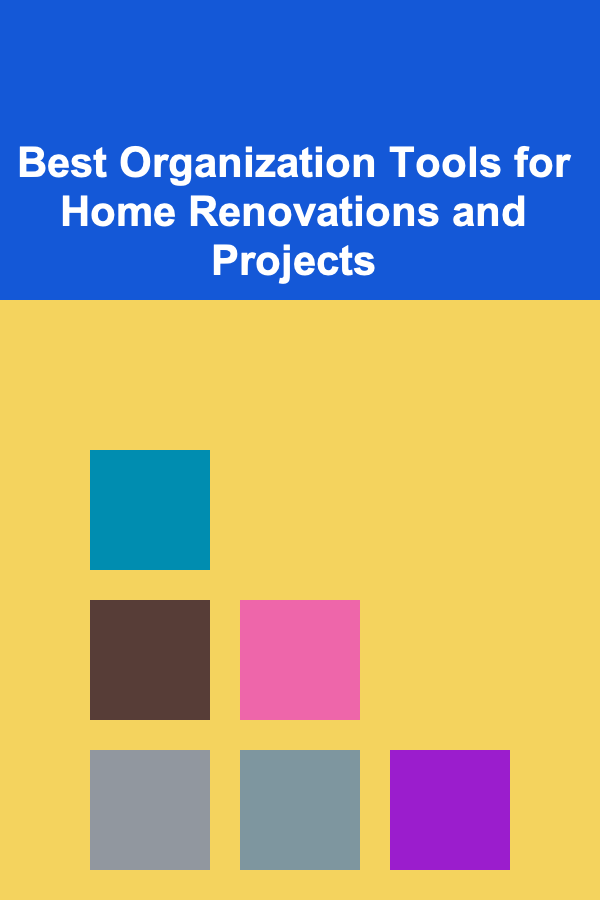
Best Organization Tools for Home Renovations and Projects
Read More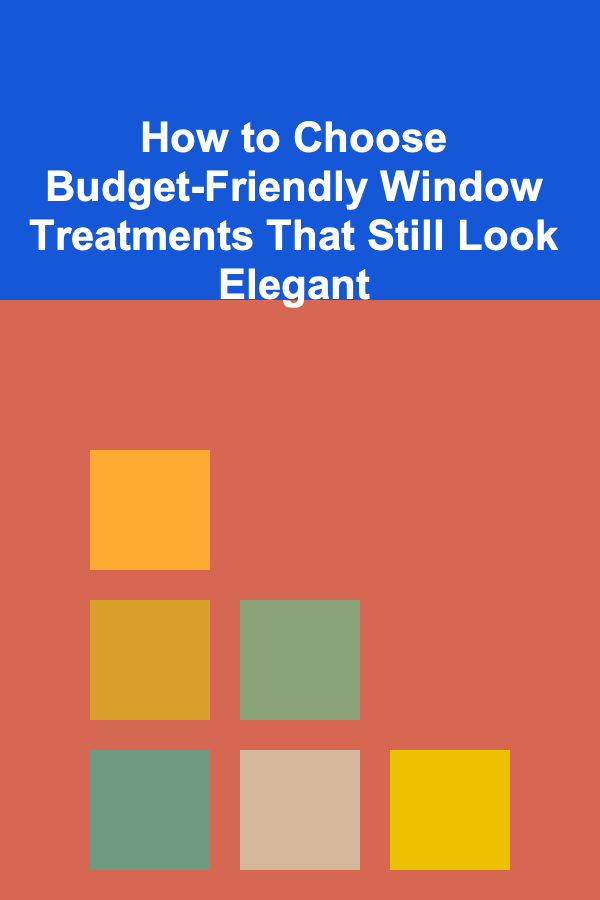
How to Choose Budget-Friendly Window Treatments That Still Look Elegant
Read More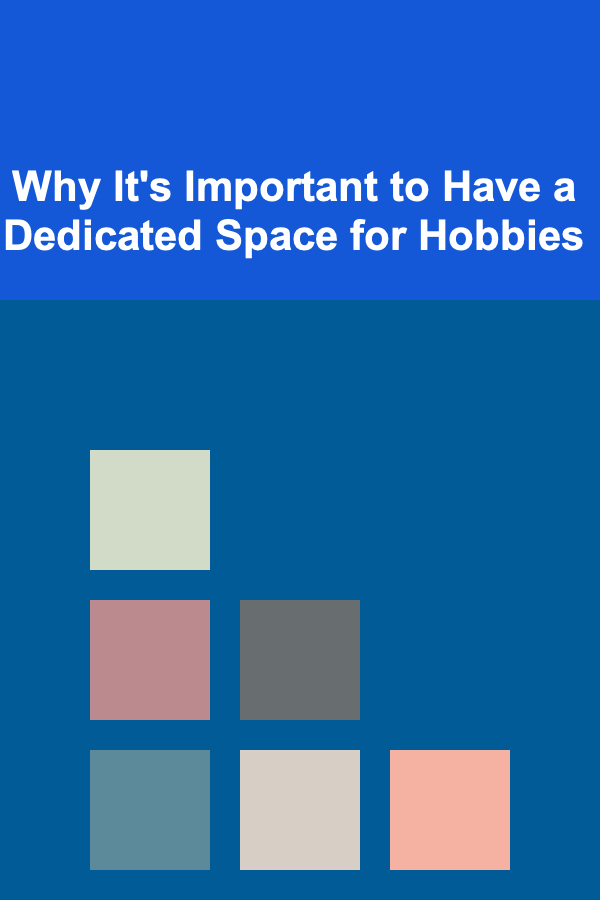
Why It's Important to Have a Dedicated Space for Hobbies
Read More
How To Identify and Avoid Romance Scams
Read More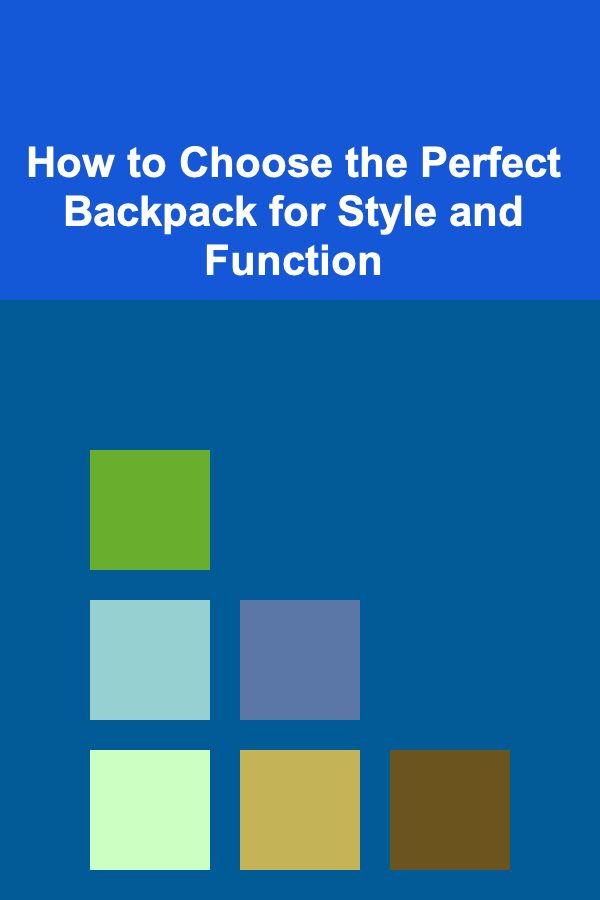
How to Choose the Perfect Backpack for Style and Function
Read More
10 Tips for Batch Cooking and Freezing: A To-Do List Guide
Read MoreOther Products

Best Organization Tools for Home Renovations and Projects
Read More
How to Choose Budget-Friendly Window Treatments That Still Look Elegant
Read More
Why It's Important to Have a Dedicated Space for Hobbies
Read More
How To Identify and Avoid Romance Scams
Read More
How to Choose the Perfect Backpack for Style and Function
Read More